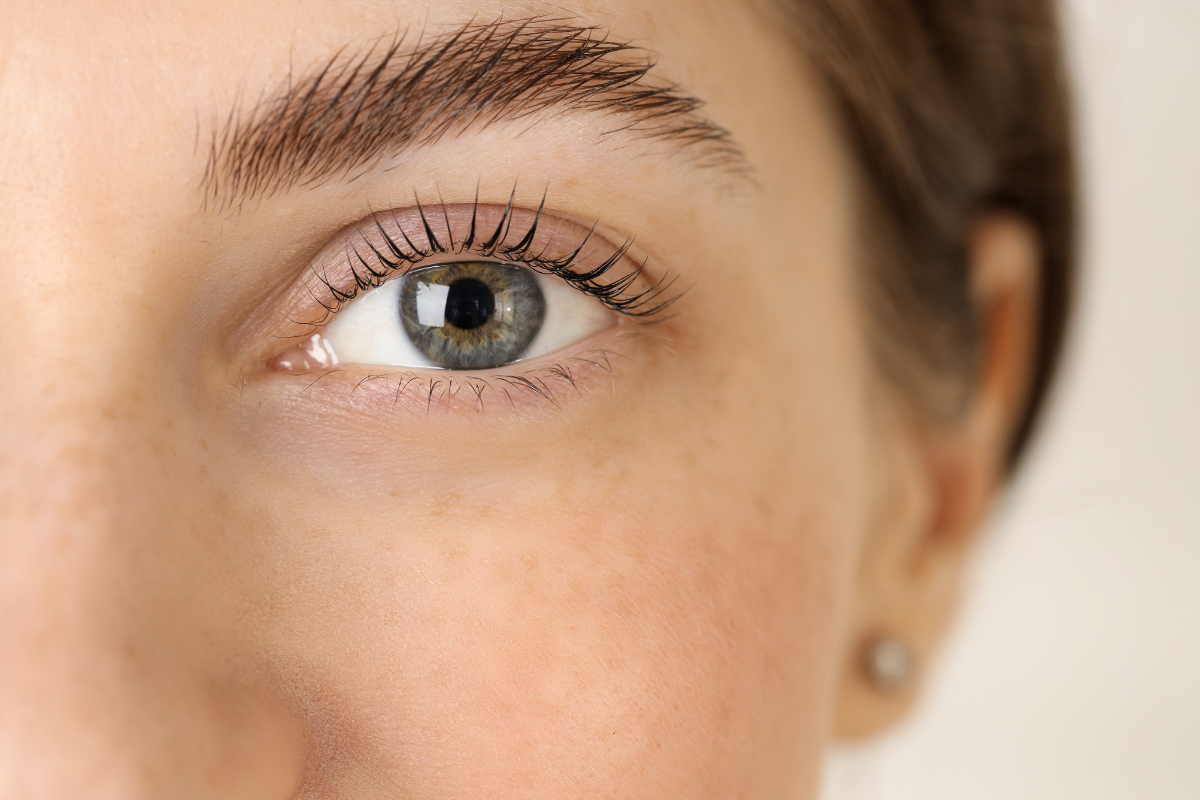
The modern pursuit of facial rejuvenation has introduced a spectrum of non-surgical alternatives to traditional lifting procedures, with the non-surgical brow lift emerging as a popular choice for individuals seeking improvement without the requisite downtime and inherent invasiveness of an operation. The question of its effectiveness, however, is not a simple yes or no; it is contingent upon a nuanced understanding of the patient’s existing anatomy, their aesthetic goals, and the specific modality chosen from a burgeoning arsenal of techniques. For those with mild to moderate descent of the brow or a desire for subtle contour adjustment, these minimally invasive options can offer significant, though temporary, improvements. The results are achieved by manipulating muscle dynamics, restoring lost volume, or initiating controlled skin tightening, each approach addressing a different aspect of the aging process around the upper third of the face.
The configuration of the resulting scars is primarily dictated by the surgical technique chosen
It is critical to first establish the context by contrasting non-surgical methods with their surgical counterparts, where the configuration of the resulting scars is primarily dictated by the surgical technique chosen. A surgical brow lift, such as a coronal or endoscopic procedure, involves the physical elevation and fixation of the underlying tissues and skin. This process delivers the most dramatic and long-lasting correction, often enduring for five to ten years or more, and is therefore the gold standard for individuals with significant brow ptosis or severe skin laxity. Non-surgical options, by design, cannot replicate this profound structural repositioning. They are, instead, tools for refinement and temporary enhancement, capable of producing a subtle lift that is more about shifting resting muscle tension or volumizing depleted areas rather than achieving a significant, permanent change in the anatomical position of the brow.
By selectively relaxing specific muscles, we inhibit their ability to pull the brow down
One of the most widely used and effective methods for non-surgical brow elevation involves the strategic use of neurotoxins, most commonly Botulinum Toxin Type A. This technique works not by directly lifting the brow, but by addressing the muscles that actively depress it. The forehead contains both depressor muscles, which pull the brow down, and the frontalis muscle, which is responsible for elevation. A skilled injector precisely targets the depressor muscles, particularly the orbicularis oculi muscle near the tail of the brow and the procerus and corrugator muscles between the eyebrows. By selectively relaxing specific muscles, we inhibit their ability to pull the brow down, thereby allowing the unopposed action of the frontalis muscle to provide a slight, upward rotation and arch to the brow. This effect is subtle, typically measured in millimeters, but can dramatically open up the eye area, creating a less tired or ‘angry’ appearance, with the full result manifesting within ten to fourteen days.
Depending on the product used, results can last anywhere from six months to two years
Dermal fillers, often based on hyaluronic acid, present a second viable mechanism for non-surgical brow lifting. Unlike neurotoxins that relax muscle activity, fillers function by restoring volume that has been lost due to age-related bone and fat pad resorption, particularly in the temples and the area immediately beneath the outer brow. The injection of filler material into these strategic points provides structural support and a modest volumetric lift to the supraorbital area. The added volume acts as a scaffold, subtly pushing the brow tissue upward and outward, improving the overall contour. This method is especially beneficial for addressing hollowing in the temple region, which can contribute to a drooping brow tail. Depending on the product used, results can last anywhere from six months to two years, making it a longer-lasting option than neurotoxins, although still temporary and requiring repeat treatments for sustained effect.
Thread lifts provide immediate lift, but the full effects become more apparent over several months as collagen production increases
A more advanced, yet still minimally invasive, option is the PDO (Polydioxanone) thread lift. This procedure involves inserting absorbable sutures, which are equipped with tiny barbs or cogs, beneath the skin. The threads are anchored in the scalp or temple area and then used to physically lift the sagging brow tissue before being secured. The physical traction provides an immediate, noticeable elevation. However, the mechanism of long-term effectiveness extends beyond this initial pull. The threads themselves incite an inflammatory and healing response, stimulating the body to produce new collagen around the thread material. This newly formed collagen provides an internal structural framework that continues to support the lifted position even after the threads have dissolved, a process that typically takes several months. Thread lifts provide immediate lift, but the full effects become more apparent over several months as collagen production increases, offering a result that can last up to two years before a touch-up is necessary.
The benefit of this technique is that the results can last up to a year or more
Energy-based devices offer a completely different, non-injectable pathway to brow elevation, primarily through stimulating collagen production via heat. Treatments such as focused ultrasound (e.g., Ultherapy) or radiofrequency (e.g., Thermage) deliver controlled thermal energy deep into the dermal and subcutaneous layers of the skin. This heat causes existing collagen fibers to contract immediately, and more importantly, it triggers a long-term wound-healing response that culminates in the creation of new, stronger collagen. The result is a gradual tightening and lifting effect in the forehead and brow area that evolves over a period of two to six months. Because these treatments are dependent on the body’s natural regenerative cycles, the lift is subtle and highly natural-looking. The benefit of this technique is that the results can last up to a year or more, though patients should expect a less dramatic initial change compared to threads or fillers.
If your skin has lost its elasticity, you might not achieve the desired lift with non-surgical methods alone
The ultimate efficacy of any non-surgical brow lift is directly proportional to the patient’s suitability for the procedure. The results are most successful in younger individuals experiencing early signs of brow descent, or those with only mild laxity and good skin elasticity. For these candidates, a subtle lift is often all that is required to achieve a refreshed appearance. Conversely, the procedures are inherently limited when dealing with significant, established age-related changes. If your skin has lost its elasticity, you might not achieve the desired lift with non-surgical methods alone, and in these cases, a surgical consultation becomes a more realistic path. It is crucial for practitioners to manage expectations, clearly distinguishing the subtle, temporary nature of these procedures from the profound, enduring results of surgery.
Non-surgical options work well for mild to moderate drooping
A key advantage of non-surgical techniques, which contributes heavily to their popularity, is the minimal commitment involved. They are quick, often referred to as “lunchtime procedures,” and typically involve little to no downtime, with patients able to resume most daily activities immediately following treatment. This low-risk profile and immediate reversibility, particularly with hyaluronic acid fillers, makes them highly appealing for those who are hesitant about surgical intervention or who wish to “test the waters” of facial rejuvenation. Non-surgical options work well for mild to moderate drooping, offering a stepping stone approach to aesthetic management before considering a more permanent commitment. This adjustability allows for subtle changes over time, catering to evolving aesthetic preferences.
Temporary results require regular maintenance
The inherent trade-off for the minimal invasiveness and quick recovery of a non-surgical lift is the temporary nature of the outcome. Whether the effect is maintained by muscle relaxation, added volume, or induced collagen scaffolding, all these biological processes are finite. Neurotoxin effects typically wane within three to six months, while the longevity of fillers and threads can range from six to twenty-four months before the material is fully metabolized. Temporary results require regular maintenance, meaning a patient must commit to recurring treatment sessions to sustain the elevated appearance. This ongoing financial and time commitment must be factored into the decision-making process, as the cumulative cost over several years can sometimes approach that of a single, long-lasting surgical procedure.
Can a non-surgical eyebrow lift fix asymmetry? Yes!
An often-underappreciated benefit of injectable non-surgical techniques is the high degree of customization they permit, making them an excellent tool for addressing subtle facial imbalances. Most individuals have some degree of natural facial asymmetry, and this often extends to the position and shape of the eyebrows. Can a non-surgical eyebrow lift fix asymmetry? Yes! Through the precise, fractional dosing of neuromodulators and the strategic placement of fillers, an experienced practitioner can selectively relax muscles or add volume to one side of the forehead more than the other. This targeted approach allows for a meticulous balancing of the brow heights, creating a more harmonious and symmetrical look that is extremely difficult to achieve with the broader sweeping changes of an open surgical technique.
The injections are precise and targeted, allowing for specific adjustments to the brow area
In conclusion, the efficacy of a non-surgical brow lift is confirmed, but it must be qualified by its inherent limitations and the specific technique employed. It is a highly effective, low-risk solution for individuals seeking subtle, customizable enhancement and is particularly well-suited for mild to moderate signs of aging. The patient’s success is largely tied to realistic expectations—understanding that the goal is not a dramatic, structural lift, but a natural-looking, temporary refinement. The injections are precise and targeted, allowing for specific adjustments to the brow area, a benefit that underscores the value of these procedures as a cornerstone of modern, phased facial rejuvenation protocols.
